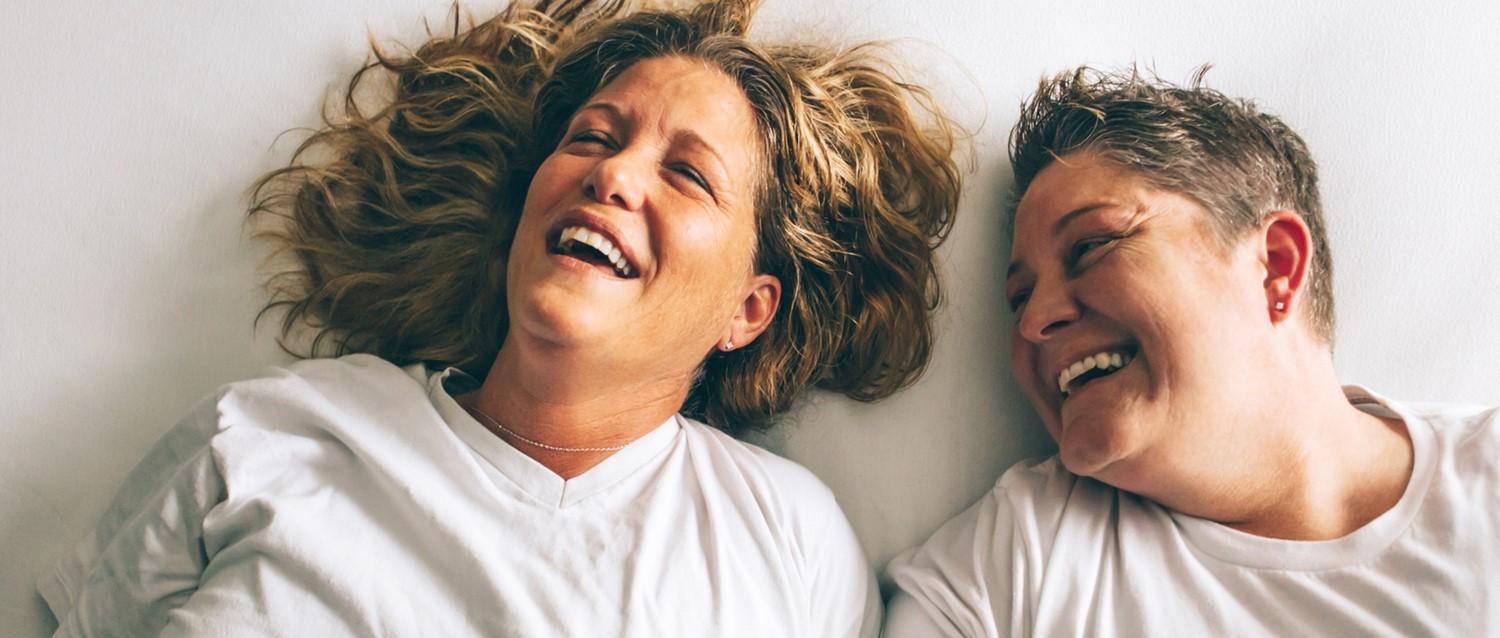
How long do the symptoms of menopause last?
Peer reviewed by Dr Hayley Willacy, FRCGP Authored by Dr Sarah Jarvis MBE, FRCGPOriginally published 16 Apr 2018
Meets Patient’s editorial guidelines
- DownloadDownload
- Share
- Language
- Discussion
Hot flushes, night sweats, mood swings, vaginal dryness, weight gain - they've all been linked to the menopause. But how do you know what's in store and how can you stop your symptoms from interfering with your life?
In this article:
Most of the changes that happen around the menopause are due to changes in hormone levels, particularly dropping levels of the female hormone oestrogen. The 'average' age periods stop is 51, but any time from 45 is 'normal'. See your doctor if your periods stop earlier.
Some symptoms of the menopause - particularly hot flushes and vaginal dryness - are almost always a direct effect of the menopause (although If you get fevers and weight loss along with night sweats, see your doctor to exclude other medical conditions).
However, it can be difficult to tease out whether it's the menopause itself, or other events in your life happening around the same time, that are mainly to blame for some other symptoms. For instance, if hot flushes are stopping you sleeping, you may feel more tired and miserable. Mood swings or depression around the menopause can affect your appetite, making you prone to weight gain.
Continue reading below
Feeling flushed
Hot flushes are the 'classic' menopausal symptom we all know about. Three in four women get some hot flushes, where you suddenly experience a wave of heat spreading over your upper body, neck and face. You may feel giddy, weak or sweaty, go red and feel your heart beating very fast or very hard.
The flushes usually last for several minutes, and can vary from an occasional mild feeling of warmth to periods of intense heat 15 or 20 times a day. Night sweats are just what they sound like - one minute you're nicely cosy, the next you're drenched in sweat and throwing off the bedclothes.
We used to say that hot flushes lasted, for most women, for just two or three years around the menopause. However, some studies suggest they may last much longer than that - an average, in fact, of seven years, starting up to three years before your last period. In some women, hot flushes start around the time of their last period, and in these women the average length of hot flushes is about three and a half years.
What to do if you have hot flushes
Keep cool! keeping cool won't stop your hot flushes, but it may be enough to make mild ones bearable. Turn the thermostat down; wear natural fabrics that let your skin breathe; and invest in a thinner duvet, as we tend to get hottest at night.
Hormone replacement therapy (HRT) is by far the most effective treatment for hot flushes and sweats. There has been a lot of anxiety about a possible link between HRT and breast cancer. Taking HRT for two to three years doesn't seem to increase your risk, although using HRT for five years may increase your risk by 0.5% (for every 200 women who take it, one will get breast cancer who wouldn't have done) and taking it for 10 years may increase your risk by up to 2%.
Antidepressants - although they've had something of a bad press over the years, most antidepressant medicines are safe and effective. As well as helping with depression, they relieve hot flushes in more than half of women who take them.
Natural remedies for hot flushes
Black cohosh (a member of the buttercup family) may help relieve hot flushes. Do choose a licensed preparation like MenoHerb® - there have been occasional cases of serious side effects, including liver damage, with unlicensed versions. And it shouldn't be taken if you have any liver or kidney problems.
Red clover - this remedy seems to have natural oestrogen-like properties and 60-80 mg a day of red clover isoflavone may help with hot flushes. There have been no safety concerns about using it.
Evening primrose oil - although it's widely used, there is no evidence that this option helps with symptoms of the menopause.
Causing friction
Vaginal dryness is another common problem - as well as making sex uncomfortable, it can make you prone to urine infections, vaginal soreness and sometimes incontinence. Unlike hot flushes, vaginal dryness doesn't tend to settle with time. Topical HRT (in cream, pessary or flexible vaginal ring form) can be extremely effective. Because the dose is so small, the risk of side effects is very low. Non-hormonal vaginal moisturisers (your pharmacist can advise) are an alternative.
Remedies for vaginal dryness
Topical HRT - there are several creams and pessaries containing oestrogen that you can apply from once a day to once a week to relieve symptoms. Doctors recommend you tail them off every few months to check if you still need them. There is also a vaginal 'ring' which your doctor can fit, which releases small amounts of oestrogen.
Replens® - this is a non-hormonal vaginal moisturising cream which you apply every three days. It works much better than water-based gels like K-YJelly® and is available from your pharmacist as well as on prescription.
Continue reading below
Putting on a few pounds
Many women do put on weight around the menopause, but it's not inevitable and your weight shouldn't keep going up. It's estimated that the 'average' woman puts on about 5 lb after the menopause, but it doesn't all go on straightaway. Certainly your metabolism does tend to slow down as you get older, so you burn up fewer calories. However, with small adjustments in your diet, you may well be able to avoid putting on weight.
The bad news is that even if you don't put on weight, you might find that the menopause does cause your shape to change. There is evidence that you tend to shift more towards an 'apple' rather than a 'pear' shape around the menopause, with excess weight stored around your midriff. This can increase your risk of heart attack and type 2 diabetes.
Is HRT a good option?
HRT is very effective at treating hot flushes. It protects against osteoporosis, too, although the benefit depends on how long you take it for and drops off once you stop. Taking HRT slightly increases your risk of getting (but not dying from) breast cancer while you're taking it, but this depends on how long you take HRT for, and the risk goes down when you stop treatment.
The risk of deep vein thrombosis (DVT) and pulmonary embolism (clots on the leg or the lung) is increased by some forms of HRT but not others. Your GP can advise on the specifics of risks and benefits for you, depending on your medical history.
There are lots of lifestyle tips to cut the impact of hot flushes and sweats too, including avoiding woolly jumpers and polo necks; cutting out alcohol and caffeine; switching to a thinner duvet; and wearing several thin layers you can take on and off. Increasing the amount of soya you eat and drink may also relieve flushing, as can herbal remedies like Menoherb® or red clover.
Regular exercise can relieve hot flushes, protect your heart and help keep weight down. It can also protect against osteoporosis and type 2 diabetes - and all drug-free!
With thanks to 'My Weekly' where this article was originally published.
Patient picks for Menopause and HRT

Hormones
What it's like to go through early menopause
The menopause is a natural part of life that occurs when the ovaries stop producing eggs and when a woman's hormone levels change. Although it usually takes place between 45 and 55, around one in 100 women experience the menopause before 40 years of age.
by Lydia Smith

Hormones
How to support someone during the menopause
From hot flushes to night sweats and mood swings, the menopause can be a very challenging time. But many people close to the person going through the menopause do not know how best to support them. Here we look at what you can do to help a partner, friend or relative cope with the menopause.
by Lydia Smith
Continue reading below
Article history
The information on this page is peer reviewed by qualified clinicians.
Latest version
16 Apr 2018 | Originally published
Authored by:
Dr Sarah Jarvis MBE, FRCGP

Ask, share, connect.
Browse discussions, ask questions, and share experiences across hundreds of health topics.

Feeling unwell?
Assess your symptoms online for free
Sign up to the Patient newsletter
Your weekly dose of clear, trustworthy health advice - written to help you feel informed, confident and in control.
By subscribing you accept our Privacy Policy. You can unsubscribe at any time. We never sell your data.